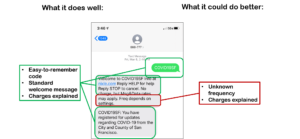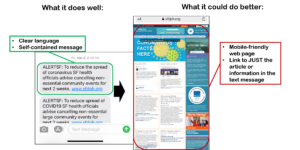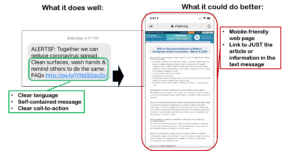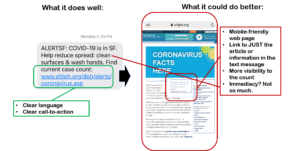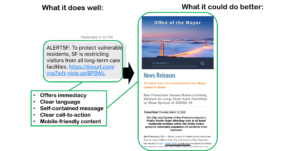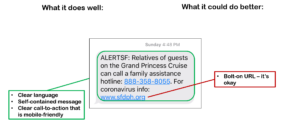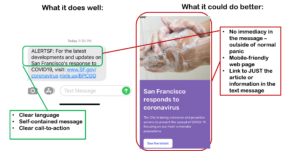SMS In Emergency Situations: San Francisco COVID-19 Updates Via SMS
Mobile messaging on both the iOS and Android platforms offers a phenomenally rich feature set today that includes group messaging, rich media, presence information, applications, interactivity, and more. People ask me, “Why would I use SMS? It’s a featureless, boring technology.” I answer, “It always works, and it works for everyone on every phone all the time.” That’s why we use it in emergency situations to communicate. SMS works on both smartphones as well as old-school feature phones. I’m intentionally being a bit dramatic here, but even quite a few homeless people in San Francisco have cellphones.
First, kudos to San Francisco to getting a program up and running quickly. I wish I had found out about the service earlier — lots of interesting alerts on the Nixle website. That said, there is still work to do to execute well on communication strategies. Best practices include simple sign-up, explanation of charges, timely messages, clear language, and complete information. (See our full report on messaging best practices here.) The idea of these messages excited me. The execution leaves me dissatisfied, so far. And a quick disclosure: I don’t know who is driving the decisions on content, timing, and execution — the city or a third party. Therefore, placing no blame — just offering an opinion based on our frameworks for best practices.
Here are a few things I saw:
